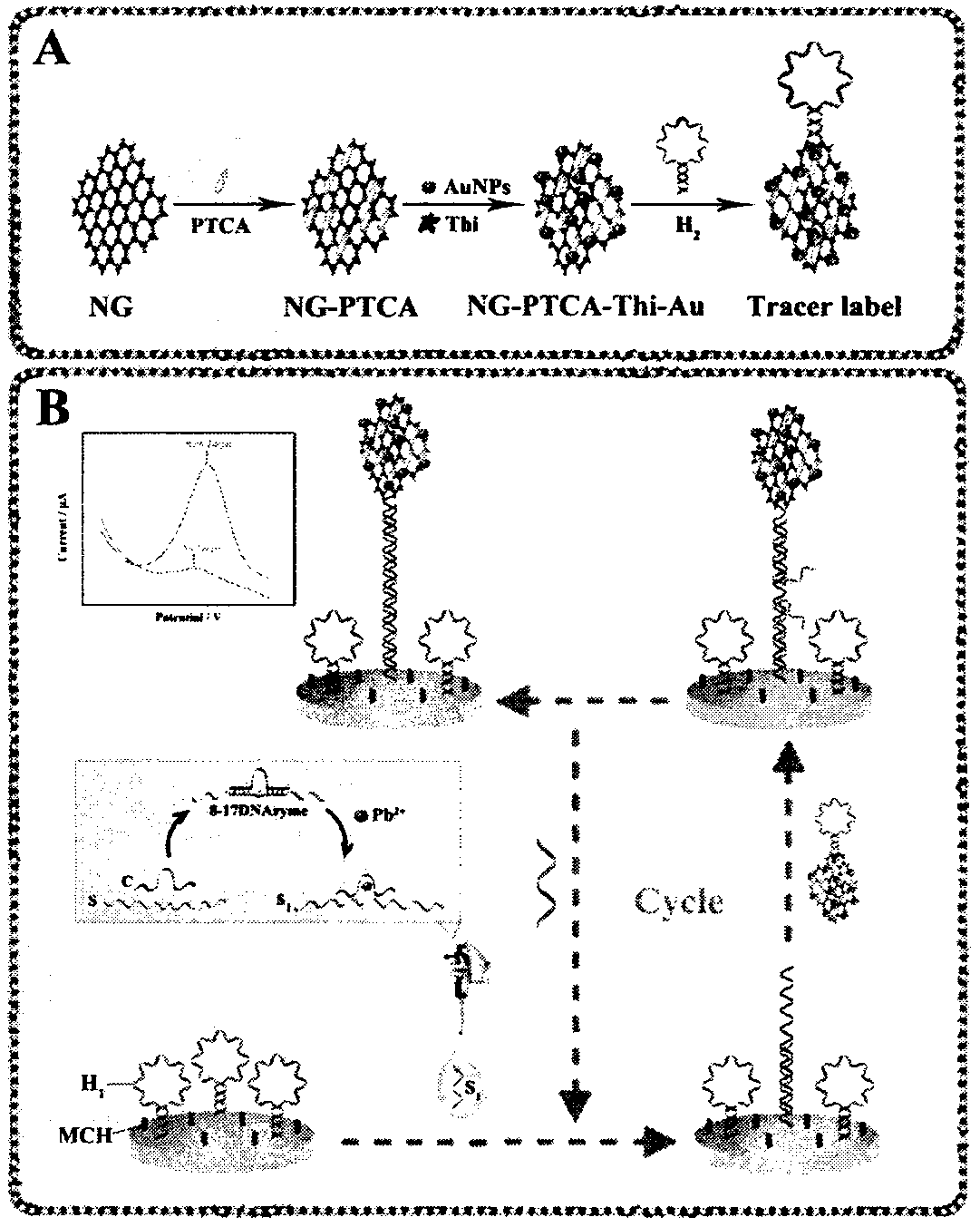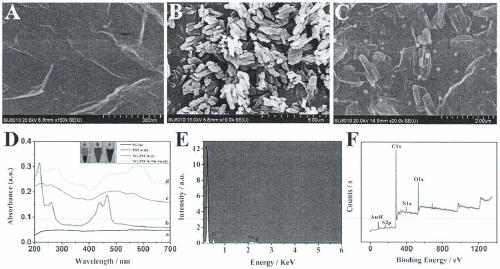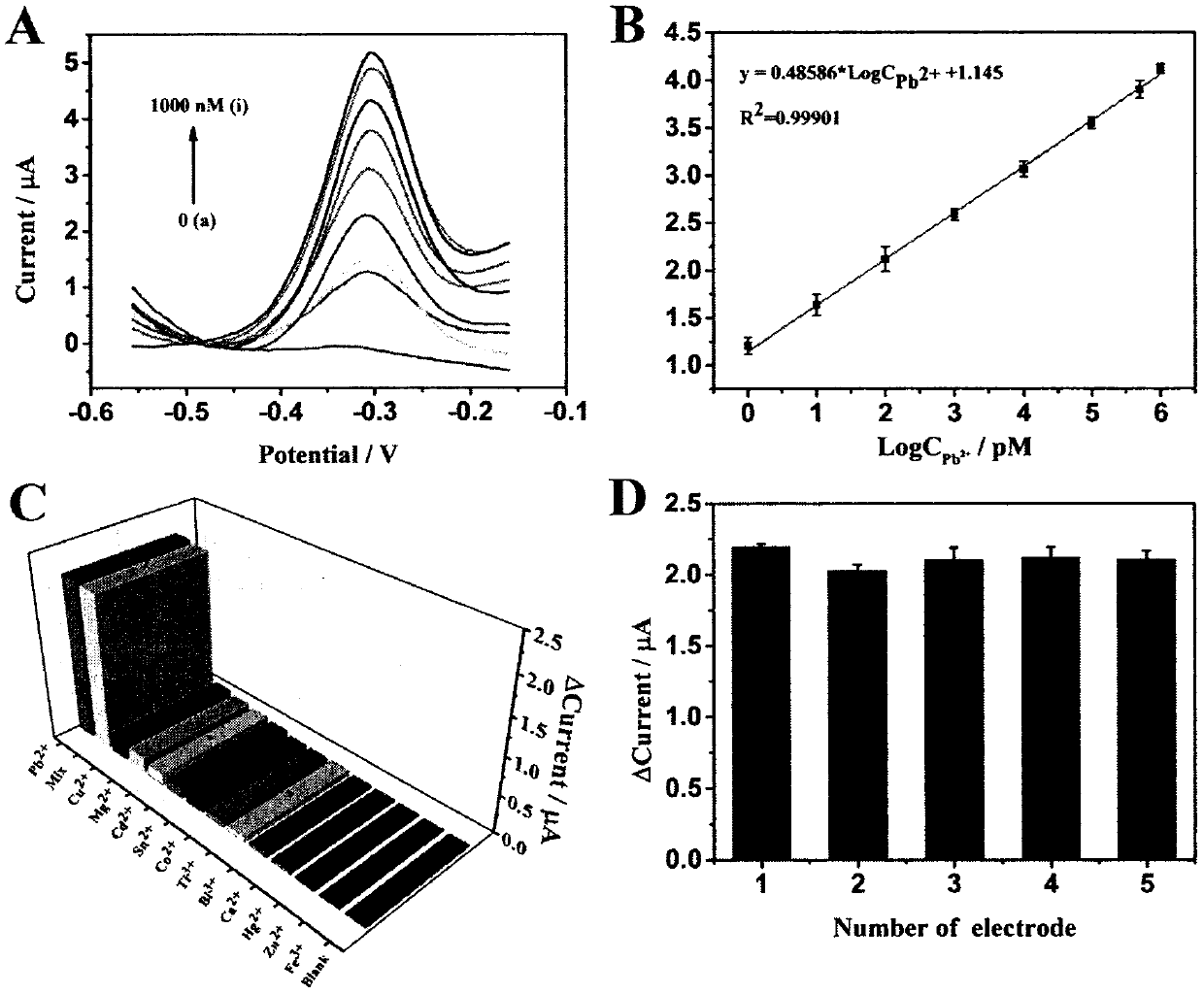Biosensor based on double-signal amplification and heavy metal lead ion detection
A biosensor, dual-signal amplification technology, applied in biochemical equipment and methods, microbial determination/inspection, instruments, etc., can solve the problems of destroying DNAzyme catalytic activity, limiting detection sensitivity, etc., to promote development and improve immobilization capacity. , the effect of the simple method
- Summary
- Abstract
- Description
- Claims
- Application Information
AI Technical Summary
Problems solved by technology
Method used
Image
Examples
Embodiment 1
[0047] Step 1. Prior to sensor construction, 2 μM 5′-SH-labeled capture probe H 1 Heat at 95°C for 5 minutes. Then, the solution was slowly cooled to room temperature to form a stem-loop structure;
[0048] Step 2. Use 0.3 and 0.05 μm Al respectively 2 o 3 Polish the electrode into a mirror surface with powder, then ultrasonically ultrasonicate the electrode for 5 minutes each in the order of ultrapure water, absolute ethanol, and ultrapure water, and dry at room temperature for later use;
[0049] Step 3. Deposit the dried electrode with 1% HAuCl4 solution for 30s under constant voltage (-0.2V), finally form a uniform AuNPs layer, and wash it with ultrapure water;
[0050] Step 4. The cleaned and dried electrode was sealed with 0.5mM MCH for 30 minutes and rinsed with ultrapure water;
[0051] Step 5. After drying, drop 10 μL of 2 μM hairpin structure capture probe H on the electrode surface 1 , and incubated at 37°C for 1 hour;
[0052] Step 6. After rinsing and drying...
PUM
 Login to View More
Login to View More Abstract
Description
Claims
Application Information
 Login to View More
Login to View More - R&D
- Intellectual Property
- Life Sciences
- Materials
- Tech Scout
- Unparalleled Data Quality
- Higher Quality Content
- 60% Fewer Hallucinations
Browse by: Latest US Patents, China's latest patents, Technical Efficacy Thesaurus, Application Domain, Technology Topic, Popular Technical Reports.
© 2025 PatSnap. All rights reserved.Legal|Privacy policy|Modern Slavery Act Transparency Statement|Sitemap|About US| Contact US: help@patsnap.com



